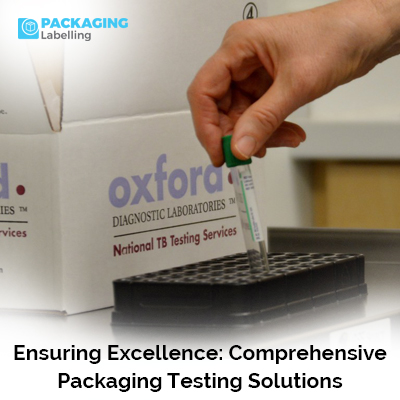Ensuring Excellence: Comprehensive Packaging Testing Solutions

Introduction:
Packaging plays a crucial role in safeguarding products during transit, storage, and display. The success of any product in the market is heavily reliant on the quality and effectiveness of its packaging. To ensure excellence in packaging, manufacturers must invest in comprehensive packaging testing solutions. In this article, we will explore the importance of packaging testing, the key elements of a robust testing process, and the various testing methods available to guarantee the highest standards in packaging.
I. Importance of Packaging Testing:
Product Protection: One of the primary purposes of packaging is to protect the enclosed product from external elements such as moisture, heat, and physical impact. A comprehensive packaging testing process evaluates the packaging's ability to withstand various conditions and ensures that the product remains intact and unharmed.
Regulatory Compliance: Different industries and regions have specific regulations regarding packaging standards. Compliance with these regulations is not only essential for legal reasons but also ensures that the product reaches the end consumer in optimal condition. Comprehensive testing helps manufacturers meet these regulatory requirements, avoiding potential legal issues and ensuring consumer safety.
Brand Image and Customer Satisfaction: Packaging is often the first interaction a consumer has with a product. A well-designed and durable package conveys a positive brand image and influences the consumer's perception of the product's quality. Comprehensive testing guarantees that the packaging meets or exceeds customer expectations, contributing to overall satisfaction and brand loyalty.
II. Key Elements of a Robust Packaging Testing Process:
Material Testing: The first step in packaging testing is evaluating the materials used. This includes assessing the strength, durability, and flexibility of materials like cardboard, plastics, and metals. Material testing ensures that the chosen materials can withstand the rigors of transportation and storage without compromising the product's integrity.
Seal Integrity: Proper sealing is critical for protecting products from contaminants and maintaining freshness. Packaging testing involves evaluating the seals for strength and integrity, ensuring that they remain intact throughout the product's lifecycle. This is particularly important for perishable goods and products sensitive to environmental factors.
Drop and Impact Testing: During transportation and handling, packages can be subjected to various impacts and drops. Drop and impact testing simulate these real-world scenarios, assessing how well the packaging can absorb shocks and protect the product. This type of testing is crucial for products that are fragile or have specific handling requirements.
Environmental Testing: Packaging must withstand different environmental conditions, including temperature variations and humidity. Environmental testing evaluates how well the packaging materials endure these conditions, preventing degradation or damage to the product. This is especially important for products that may be stored or transported in diverse climates.
Vibration Testing: Vibrations during transportation can affect the stability of packaged products. Vibration testing mimics these conditions, assessing the packaging's ability to withstand continuous vibrations without compromising the product's integrity. This is particularly relevant for products with delicate internal components or liquids.
| Also Read: Ensuring Integrity: Cutting-Edge Packaging Testing Solutions for Quality Assurance |
Compression Testing: Stacking and compression are common occurrences during storage and transportation. Compression testing evaluates how well the packaging can withstand pressure without collapsing or damaging the enclosed product. It ensures that the packaging maintains its structural integrity even when subjected to heavy loads.
III. Testing Methods for Comprehensive Packaging Evaluation:
Accelerated Aging Tests: These tests subject the packaging to accelerated aging conditions, such as elevated temperatures and humidity, to simulate the effects of extended storage. This helps manufacturers predict how the packaging will perform over time and identify potential issues before they arise.
Non-Destructive Testing (NDT): NDT methods, like X-ray and ultrasound, allow manufacturers to inspect the internal structure of packaging without causing damage. These techniques are especially useful for detecting hidden defects or weaknesses that may compromise the packaging's effectiveness.
Leak Detection Tests: For products susceptible to leakage, leak detection tests ensure that the packaging effectively contains liquids or gases. This is crucial for industries such as food and pharmaceuticals, where leakage can lead to contamination and pose significant risks to consumers.
Machinery and Automation Testing: Packaging is often handled by machinery during the manufacturing and distribution processes. Testing the compatibility of packaging materials with automated systems ensures smooth production and reduces the risk of malfunctions that could damage the packaging or product.
Conclusion:
Comprehensive packaging testing solutions are indispensable for ensuring excellence in product packaging. By evaluating materials, seals, resistance to environmental factors, and various real-world scenarios, manufacturers can guarantee that their products reach consumers in optimal condition. This not only enhances brand image and customer satisfaction but also ensures compliance with regulatory standards. In an ever-evolving market where consumer expectations and regulatory requirements continue to rise, investing in robust packaging testing is not just a necessity but a strategic imperative for businesses aiming for long-term success.









